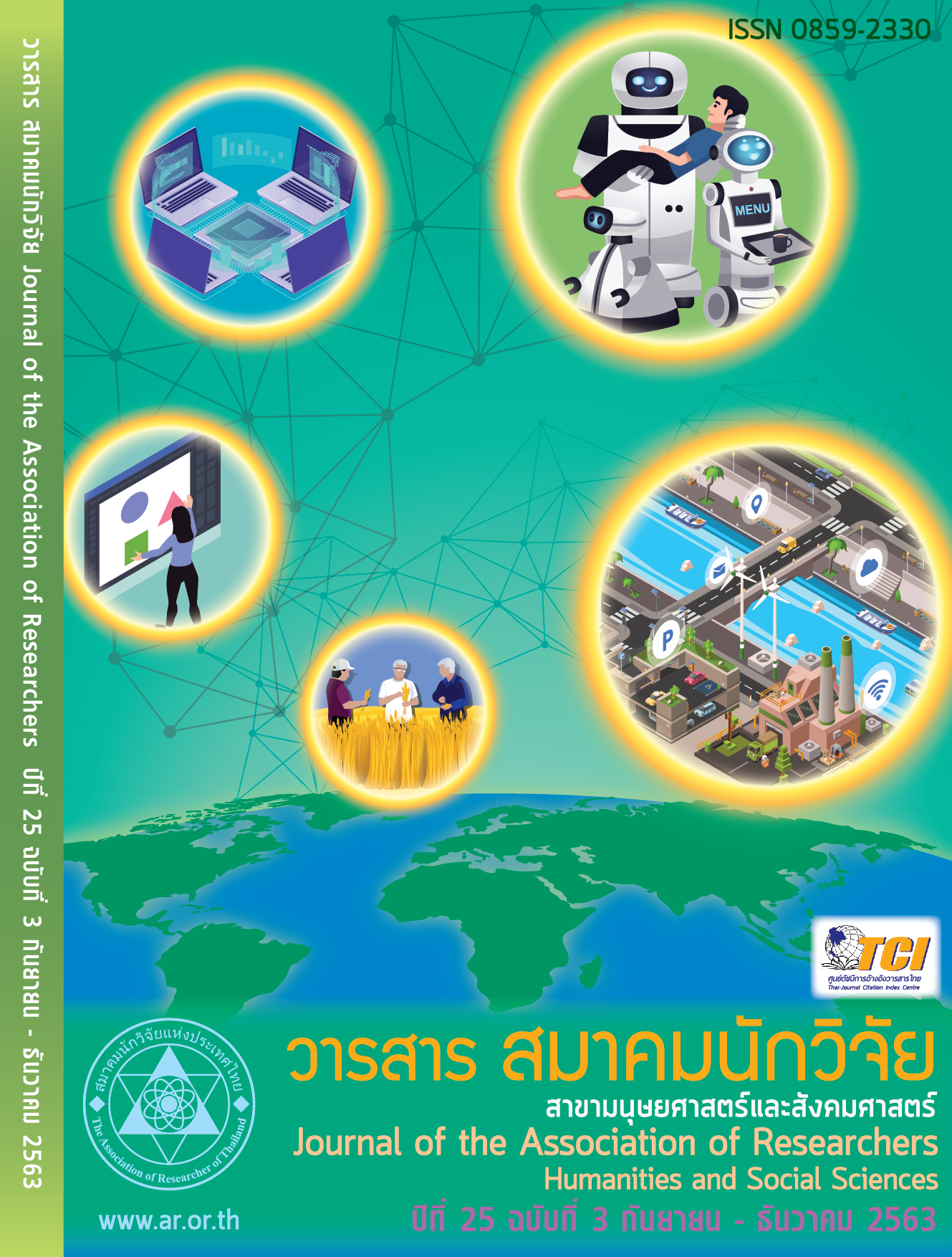Influences of Self-Efficacy and Quality of Work Life on Organizational Commitment of Officers at the Sixth Anti-Aircraft Artillery Battalion
Main Article Content
Abstract
The objectives of this study were to study the differences of personal factors affecting self-efficacy, quality of work-life, and organizational commitment and to study influences of self-efficacy and quality of work-life on organizational commitment of officers at the 6th Anti-Aircraft Artillery Battalion. Research participants were 248 military officers of the 6th Anti-Aircraft Artillery Battalion. The research instruments used were questionnaires. The statistics used for data analysis were percentage, mean, standard deviation, F-test, and multiple regression analysis. The research results found the differences of personal factors such as ranks, and marital status affected self-efficacy, quality of work-life, and organizational commitment of officers at the 6th Anti-Aircraft Artillery Battalion with a statistical significance level at 0.05. Self-efficacy such as performance accomplishment, vicarious experience, verbal persuasion, and emotional arousal affected the organizational commitment of officers at the 6th Anti-Aircraft Artillery Battalion with a statistical significance level at 0.05. In addition, quality of work-life such as adequate and fair compensation, development of human capacities, constitutionalism, total living space, and organizational pride affected the organizational commitment of officers at the 6th Anti-Aircraft Artillery Battalion with a statistical significance level at 0.05.
Article Details
บทความที่ปรากฏในวารสารนี้ เป็นความรับผิดชอบของผู้เขียน ซึ่งสมาคมนักวิจัยไม่จำเป็นต้องเห็นด้วยเสมอไป การนำเสนอผลงานวิจัยและบทความในวารสารนี้ไปเผยแพร่สามารถกระทำได้ โดยระบุแหล่งอ้างอิงจาก "วารสารสมาคมนักวิจัย"
References
วารุณี แดบสูงเนิน. (2554). คุณภาพชีวิตการทำงาน ความผูกพันต่อองค์การ การเสริมสร้างพลัง ในงานและคุณภาพการให้บริการของพยาบาลระดับปฏิบัติการ โรงพยาบาลเอกชนแห่งหนึ่งในกรุงเทพมหานคร. ปริญญาศิลปศาสตรมหาบัณฑิต สาขาวิชาจิตวิทยาอุตสาหกรรมและองค์การ, มหาวิทยาลัยธรรมศาสตร์.
Allen N. J. & Meyer, J. P. (1990). The measurement and antecedents of affective, continuance, and normative commitment to the organization. Journal of Occupational Psychology, 63, 1-18.
Bandura, A. (1997). Self-efficacy: The exercise of control. New York: Freeman.
Cherian, J., & Jacob, J. (2013). Impact of self-efficacy on motivation and performance of employees. International Journal of Business and Management, 8(14), 80.
Drafke, M. W., and S. Kossen. (2002). The Human Side of Organizations (8th ed.). New Jersey: Prentice-Hall.
Farid, H., Z. Izadi, I. A. Ismali, & F. Alipour. (2015). Relationship between quality of work-life and organizational commitment among lectures in a Malaysian public research university. The Social Science Journal, 52, 54-61.
Halbesleben, J. R. (2010). A meta-analysis of work engagement: Relationships with burnout, demands, resources, and consequences. Work engagement: A handbook of essential theory and research, 8(1), 102-117.
Huse, E. & Cumming, T. (1985). Organization Development and Change. New York: West Publishing.
Luthans, F., Youssef, C. M., & Avolio, B. J. (2007). Psychological Capital: Developing the Human Competitive Edge. Oxford, England: Oxford University Press.
Mowday, R. T., Steers, R. M., & Porter, L. W. (1979). The measurement of organizational commitment. Journal of Vocational Behavior, 14(2), 224–247.
Steers, R. M. (1977). Organizational Effectiveness. Santa Monica: Goodyear Publishing Company.
Werther, W. B., & Davis, K. (1989). Human resources and personnel management. Harper San Francisco.
Translated Thai References
Dabsungnoen, W. (2011). Quality of work life, organizational commitment, work empowerment, and quality of service of the operative professional nurses. Master of Arts (Industrial and Organizational Psychology), Thammasat University. (in Thai)
Yodrakang, J. (2011). Study of the effect of job resources and personal resources model on the personal initiative through the mediating role of work engagement. A thesis for Master of Art. Thammasat University. (in Thai)


